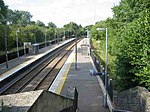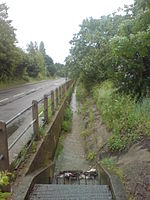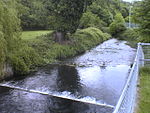Brickendon

Brickendon is a village in the civil parish of Brickendon Liberty in the district of East Hertfordshire about 3 miles (4.8 km) south of the county town Hertford, and is served by Bayford railway station. Centred on a traditional village green and a village pub, The Farmer's Boy, there is an active community with several clubs and activities. The parish (rather than just the village) has won several awards in the Hertfordshire Village of the Year contest in recent years. The name is said to have come from a Saxon by the name of Bricca who laid claim to the hill site, the Saxon word 'don' meaning a hill; thus Bricca's Hill. In the Domesday Book the name appears as Brichendone. The manor of Brickendon was held by the canons and later the monks of Waltham Abbey (abbey), Essex, from about 1060 until the Dissolution of the Monasteries. Henry II created the liberty of Brickendon in about 1174/84 which granted the abbot freedom from certain taxes normally due to the crown. The chapel, dedicated to the Holy Cross and St Alban, was built in 1932 on land and with funds donated by Constance Demain Saunders and her mother Minnie Kingsley. It is part of the ecclesiastical parish of Bayford within the Hartford Hundred West group of parishes. Brickendon Grange was built by Benjamin Cherry in 1859 and is now a golf club designed by CK Cotton. Fanshaws mansion, built in 1885 by Henry Wilson Demain Saunders, is now the headquarters of the Institute of the Motor Industry. The second series of Catweazle was filmed around Brickendon in 1970. The former manor house at Brickendonbury was used as a spy training centre during World War II as Station XVII of the Special Operations Executive (SOE) and is now home to the Tun Abdul Razak Research Centre of the Malaysian Rubber Board.
Excerpt from the Wikipedia article Brickendon (License: CC BY-SA 3.0, Authors, Images).Brickendon
Brickendon Lane, East Hertfordshire Brickendon Liberty
Geographical coordinates (GPS) Address Nearby Places Show on map
Geographical coordinates (GPS)
| Latitude | Longitude |
|---|---|
| N 51.755 ° | E -0.0853 ° |
Address
The Farmer's Boy
Brickendon Lane
SG13 8NU East Hertfordshire, Brickendon Liberty
England, United Kingdom
Open on Google Maps









